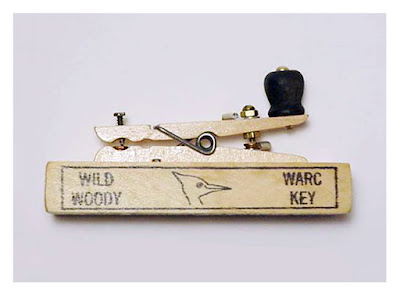From the NAQCC newsletter: "The key is Dave's own unique invention called the WILD WOODY WARC KEY, and each key is consecutively serial numbered. (My key is number 476). WILD WOODY WARC KEYs have a place of honor in the ARRL Headquarters, and in the offices of Kewnwood, Icom and other such places. Dave, as some of you may know writes a monthy column for CQ Magazine and is the author of several books on keys, QRP operation and other subjects. The WILD WOODY WARC KEY is pictured below. Ingenous simplicity -- a true work of wonder. Thank you Dave."
I post this for several reasons.
1) A friend recently complained that telegraph keys are getting expensive. "Ha!" I said. This proves me right. Clothes pins are not expensive.
2) I think we should make more use of clothes pins in ham radio. They were used in my 20/15 meter dipole in the Dominican Republic.
3) I worked K4TWJ several times -- twice from the Dominican Republic, and once from Virginia using a homebrew transceiver that he had inspired. He was pleased. It was cool.
4) As a little kid, I liked Woody the Woodpecker.
4) On Thursday morning my wife and I saw a Pileated Woodpecker (just like Woody!) in our neighborhood. TRGHS.




























